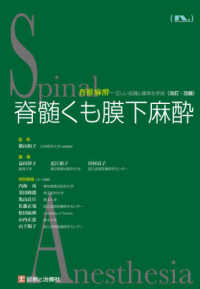Full Description
This book focuses on the economic analysis of refugee law and the protection of refugee rights. It offers a law and economics model applied to migration and states. The book focuses on the most critical 'push' factors that impact lawmakers in enacting and modifying asylum law. Furthermore, the book examines the economic advantages and disadvantages of a centralized supernational asylum law (acquis communautaire) that could, eventually, eliminate competition between legal orders in asylum law and do away with the negative externalities caused by 'asylum shopping'.
The book critically analyses international refugee law, pursuing an interdisciplinary approach. Its principal goal is to explore refugee law through the lenses of the law and economics approach and against the backdrop of a human rights approach. After explaining the evolution of the human rights approach, the book elaborates on the legal and economic factors that impact refugees, on the one hand, and public policy, on the other. In conclusion, a balance that considers the national preferences of destination countries and the protection of refugee rights is proposed.
Contents
Chapter 1: Introduction.- Chapter 2: Refugee Rights during the Twentieth Century: A Historical Approach.- Chapter 3: The Geneva Convention of 1951: From a Human Rights Perspective to a Law and Economics Approach?.- Chapter 4: "Push" Factors upon Ratification and Compliance with the 1951 Convention.- Chapter 5: The different variables affecting the refugee's "decision" process.- Chapter 6: The Pros and Cons of Centralizing Asylum Law in the EU.- Chapter 7: Conclusion.








